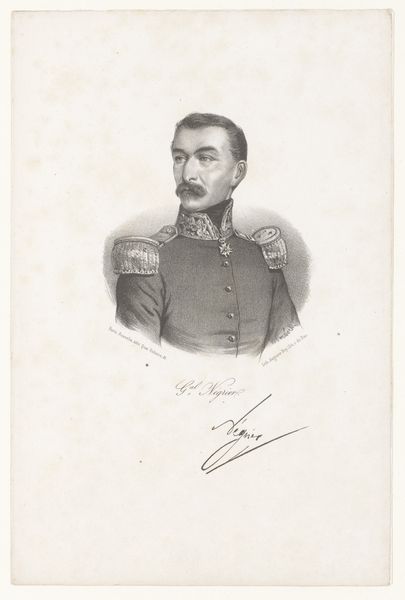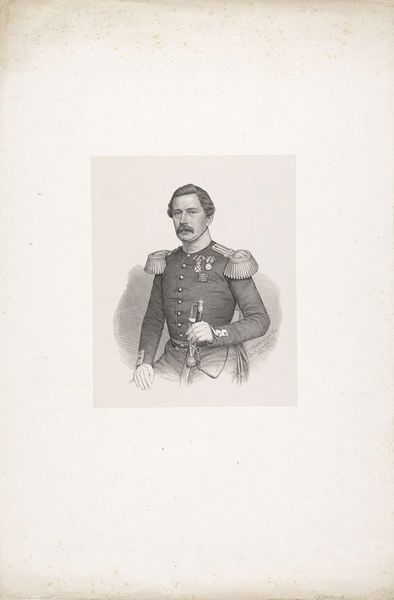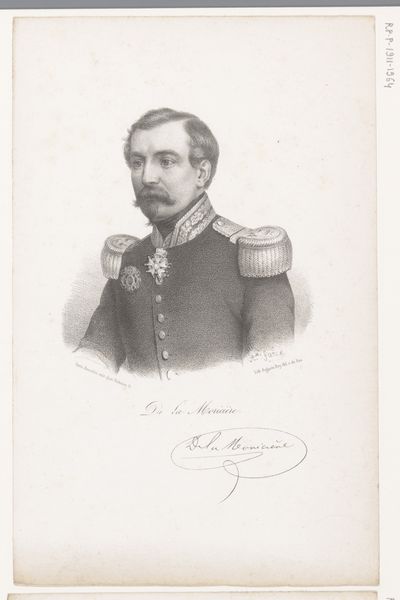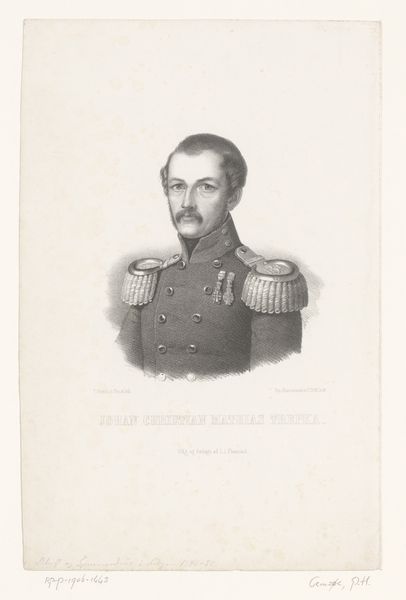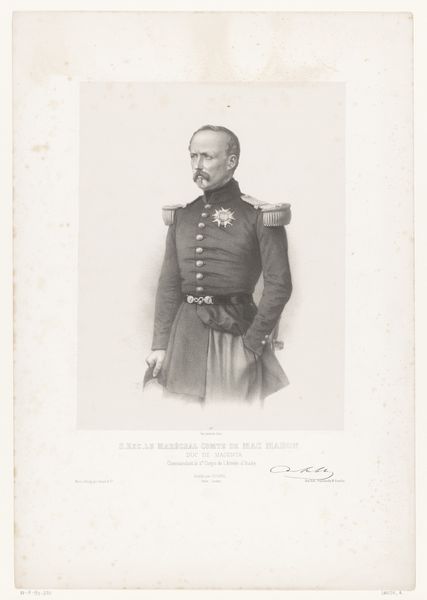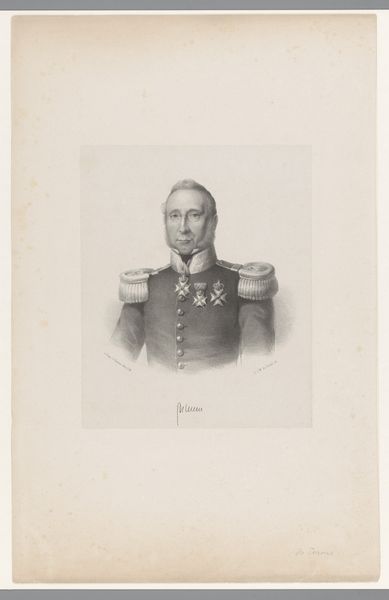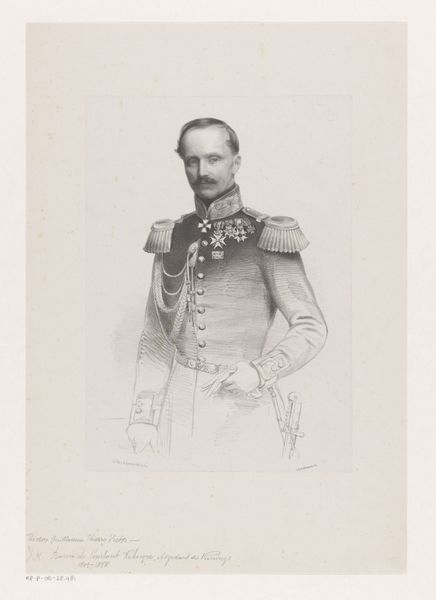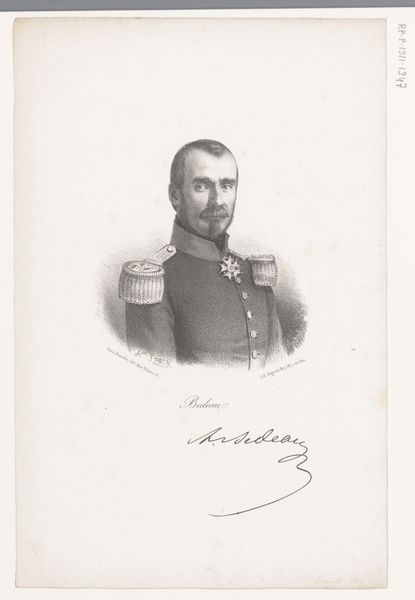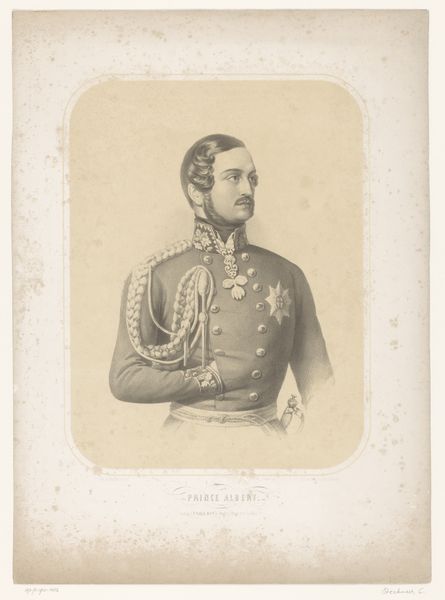
drawing, pencil
#
drawing
#
16_19th-century
#
self-portrait
#
pencil
#
portrait drawing
#
academic-art
#
realism
Dimensions: height 272 mm, width 201 mm
Copyright: Rijks Museum: Open Domain
Curator: This drawing, executed in pencil in 1847, is titled "Zelfportret," or Self-Portrait, by Christian Heinrich Gottlieb Steuerwald. Editor: Immediately, I am struck by the man’s reserved expression and rigid posture, offset against the softness of the pencil strokes. He's buttoned into what looks like a military uniform with medals displayed, suggesting a tension between public duty and a perhaps more sensitive interior life implied by the medium. Curator: Indeed. Considering the historical context, we see how the socio-political landscape influenced art production and presentation. Steuerwald lived through a period of immense political upheaval in Europe, with rising nationalism and evolving class structures. A portrait like this performed the essential function of shaping and projecting one’s public image. Editor: I see this portrait as offering insights into questions of identity formation in a hierarchical society. He’s an actor performing a specific role. And how much of this "role" is internalized and authentic? I would wonder if it is not only shaped by his class, race and gender expectations, but if these are actively imposed onto himself in some manner. Curator: His choice of a more intimate medium like pencil offers a fascinating contrast to the formal military attire. While projecting power, Steuerwald, also allows a peek at potential vulnerabilities and invites a certain intimacy, subverting to a point any notions of hypermasculine self-portrayal. Editor: The medals worn symbolize allegiance to country and perhaps valor, but from a critical perspective, these emblems could be viewed as external markers obscuring a deeper understanding of the self, something like the gender and cultural "armor" of our current moment. Curator: It would be compelling to explore how such imagery was consumed, or challenged, at the time. Did the public view these formal presentations of self with skepticism, understanding the performances involved? Or did they serve to simply reinforce power structures? Editor: For me, Steuerwald’s portrait highlights that perennial dance between visibility and invisibility, performativity and self-awareness. There are these intersecting tensions we constantly manage, in all the multiple roles we assume through our life’s performance, something this work communicates quite eloquently to us.
Comments
No comments
Be the first to comment and join the conversation on the ultimate creative platform.

